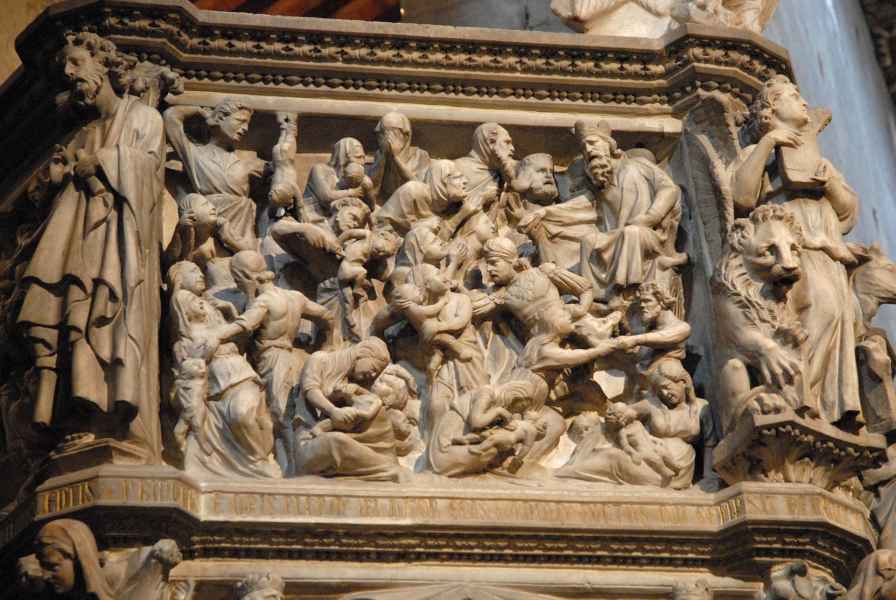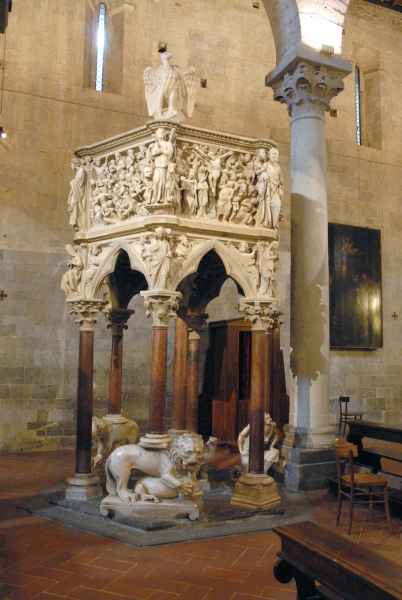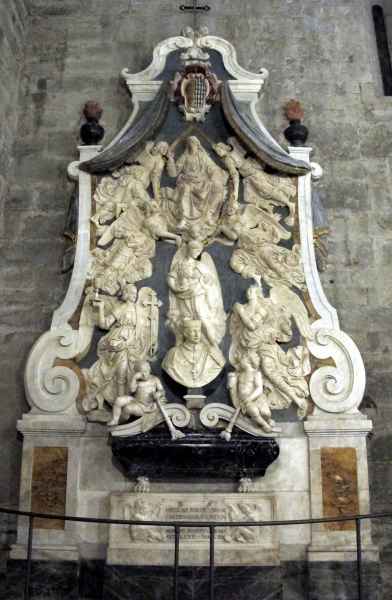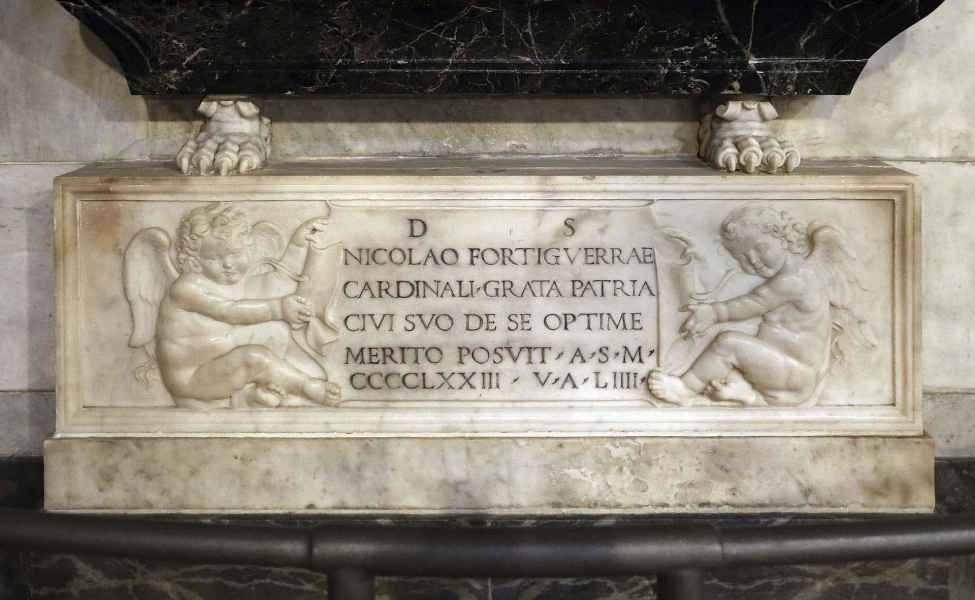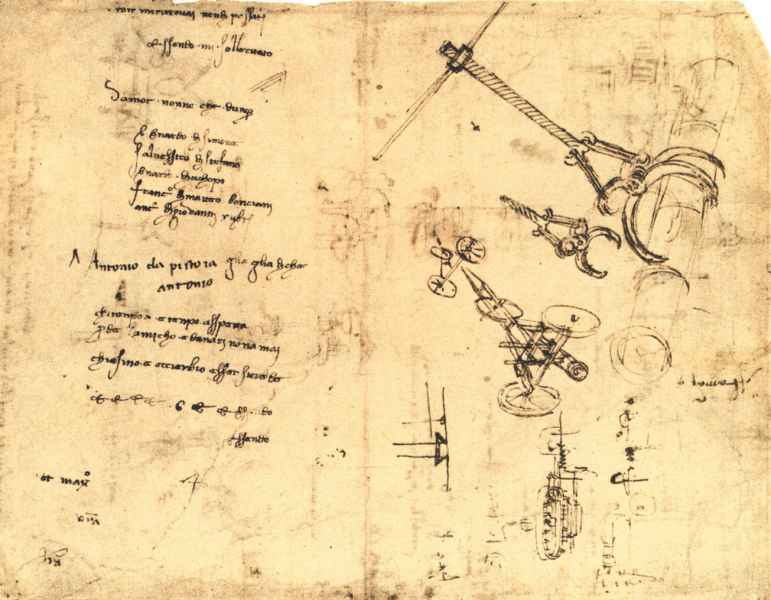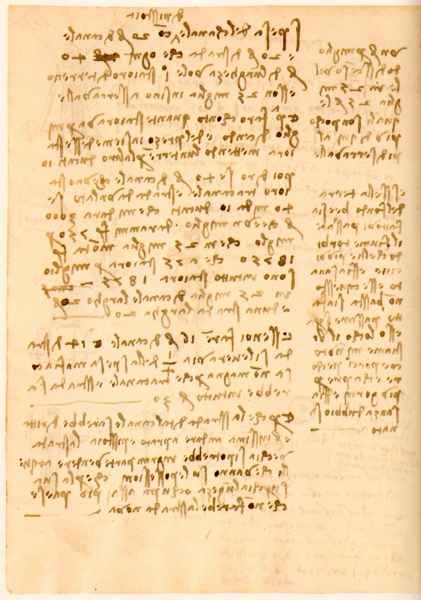Pistoia was a city of art whose diocese included the village of Vinci, and the young Leonardo would certainly have had occasion to visit it. His aunt Violante (b. 1432) lived in Pistoia with her husband Simone di Antonio da Pistoia, who due to the dowry that his bride brought to the marriage is listed among the creditors of Leonardo’s grandfather, Antonio, in the land registry of 1458. In the Codex Atlanticus Leonardo also mentions various friends of his who lived in Pistoia.
On his visits Leonardo would have been able to admire such works of art as the marble pulpit in the Church of Sant Andrea sculpted by Nicola and Giovanni Pisano and the fresco cycles decorating the Cappella del Tau. In the second half of the 1470s Andrea del Verrocchio worked on various projects in Pistoia. He played an important role in the realization of the Cenotafio Forteguerri, a funerary monument in the city’s cathedral dedicated to Cardinal Niccolò Forteguerri. Two terracotta maquettes conserved in the Louvre and attributed variously to Verrocchio, Lorenzo di Credi and even Leonardo have been linked to this monument. Verrocchio was also the artist responsible for the painting of the Madonna di Piazza in the Duomo, begun by him around 1478 and finished around 1485 by Lorenzo di Credi. Di Credi painted the scene of the Annunciation that decorates a predella now in the collections of the Louvre, although various scholars have attributed the panel to Leonardo. He also may have collaborated with Verrocchio in the painting of the fresco of Saint Jerome in the Church of San Domenico.
Leonardo mentions Pistoia several times in his notes on the project to divert the Arno towards Prato and Serravalle Pistoiese – in the Codex Atlanticus, in the Codex Madrid II (suggesting that its course might be changed to pass by Prato and Poggia a Caianao on its way to Villa Basilica, and from Lamporecchio to Monsummano), and on RL 12685 and 12279, as well as on the hydrographic map RL 12277.
Now collected together in the Museo Diocesano of Pistoia are works of art on sacred subjects that once were scattered around the area of Vinci (more than one of them had graced the Church of Santa Maria in the village of Faltognano) and which Leonardo would certainly have had the opportunity to see in his youth or later in life when he revisited the area of his birth.

Pistoia
Texts by
Alessandro Vezzosi, in collaboration with Agnese Sabato / English translation by Lisa Chien
Related resources
External links
Gallery
Related resources
External links
Gallery





